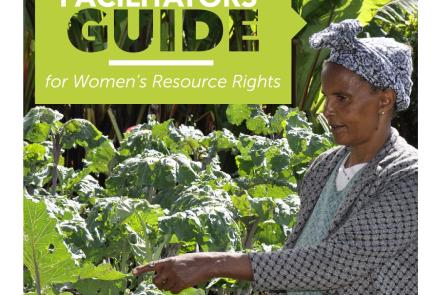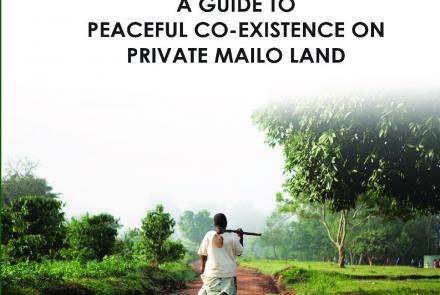Women’s Land Rights
Nearly fifteen years after the Beijing Conference on Women, there is considerable interest within the women’s land rights movement in Uganda and with government institutions to review the progress of gender equality. Whereas there have been considerable gains for women in this period, the fulfillment of government’s commitment of having a third representation of women on all elective positions, gender inequalities persist and today there is a less favourable economic and political environment for promoting equality than that which was fifteen years ago when Uganda was developing its constitution.
Gender mainstreaming has become rhetoric without tangible benefits accruing to women. Social transformations that make equality in terms of resources, rights and voice a reality for women is still to be attained. This is because gender mainstreaming moved from a process of transformation to an end in itself pursued solely with an instrumentalist intent. A central problem has been the difficulty of finding a fit between the technical project of mainstreaming gender equality in policy, programmes and projects, and challenging the deep-seated inequalities and discrimination in society’s power structures and political-economic landscape. A decade of gender mainstreaming in Uganda has blurred the distinctive focus on transforming unequal power relations.
The question for Uganda therefore, is how best gender equality can be promoted in the development of the land sector, not just from a technical perspective but as a social, economic and political entity engulfing stakeholders, right from the community level to the national level. This lends itself to several questions including how gender mainstreaming can be looked at not as an end but within the broader context of transformation towards justice and rights recognition.
Property rights in land in Uganda, whether customary or formal in nature, act both as a form of economic access to key markets and as a form of social access to non-market institutions, such as the household and community-level governance structures. Because of land’s fundamental importance in conferring such access, it is essential that policies that seek in any way to alter the distribution or to formalize property rights in land take great care not to inadvertently disenfranchise the most vulnerable members of the target population, including women. Indeed, if such land programs form part of an overall poverty reduction strategy, it is incumbent upon policy makers to understand the ways in which these most vulnerable groups gain access to land, the particular challenges facing their claims to land rights, and the role that effective rights to land can play in securing their livelihoods and those of their families.
Despite the above efforts, the land management process still remains the key site in which discrimination on the basis of gender is expressed. Unequal gender relations within the household persist in Uganda, and are usually reproduced in institutions at meso-level – in private sector institutions, local authorities, and central government ministries. Gender biases are expressed in more subtle ways at the macro level, which are often presented as if they are “gender neutral.” They are not in fact neutral since they are implemented in contexts – meso and micro –characterized by gender inequalities.
In response to substantial research suggesting that inequalities in land control and ownership are important determinants of poverty, legal reforms aiming to secure land rights of women have been instituted yet improvements on the ground have been negligible. It has become increasingly evident that legal reforms alone are insufficient; pointing to the need for more critical assessment of the factors determining the power imbalances that produce inequalities in asset rights and ultimately hinder the economic empowerment of women in Uganda.
Tenure initiatives that support gender equity can serve to increase women’s power in agricultural production as well as in social and political relationships and thus addressing gender and governance of tenure is clearly essential to the achievement of Goal 5.a of the Sustainable Development Goals (SDGs/Agenda2030) on Goal 5. Achieve gender equality and empower all women and girls.
Two further contextual dimensions are the relevance of women’s access to land and natural resources in ameliorating agricultural performance and the overall achievement of Goal 1. End poverty in all its forms everywhere; and Goal 2. End hunger, achieve food security and improved nutrition and promote sustainable agriculture and the links between land and labour.





